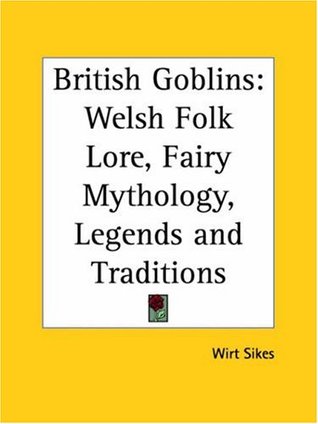More on this book
Kindle Notes & Highlights
by
Wirt Sikes
Read between
July 21 - August 24, 2024
Llangollen,
Dinas Bran
cwrw,
XI.
Gwion Bach’s
Caridwen’s
XIII.
Epimenides,
There is a class of stories still common in Wales, in which is preserved a wondrously beautiful survival of the primitive mythology. In the vast middle ground between our own commonplace times and the pre-historic ages we encounter more than once the lovely legend of the Birds of
Rhiannon,
which sang so sweetly that the warrior knights stood listening entranced for eighty years. This legend appears in the Mabinogi of ‘Branwen, daughter of Llyr,’ and, as we read it there, is a medieval tale; but the medieval authors of the Mabinogion as we know them were working over old materials—telling again the old tales which had come down through unnumbered centuries from father to son by tradition....
This highlight has been truncated due to consecutive passage length restrictions.
On the top of Craig-y-Ddinas thousands of white fairies dance to the music of many harps. In the dingle called Cwm Pergwm, in the Vale of Neath, the Tylwyth Teg make music behind the waterfall, and when they go off over the mountains the sounds of their harps are heard dying away as they recede.
Cader Idris
cwrw da.
Arail,
Sycharth,
Glyndwrdwy,
Chirk Ca...
This highlight has been truncated due to consecutive passage length restrictions.
Ogof,
dwr
halen,
Teirnyon,
Ychain Banog,
Melangell,
illusive
A common means of getting rid of the fairies is to change one’s place of residence; the fair folk will not abide in a house which passes into new hands.
barm.
anwyl!
Meirig
roguery
Cemmaes
Llidiart y Barwn
They were not to be impeded in ingress or egress; a bowl of milk was to be left for them at night on the hearth; and, in return, they left a small present in money when they departed, if the house was kept clean;
Their general dress was green, that they might be the better concealed; and, as their children might have betrayed their haunts, they seem to have been suffered to go out only in the night time, and to have been entertained by dances on moonlight nights. These dances, like those round the Maypole, have been said to be performed round a tree; and on an elevated spot, mostly a tumulus, beneath which was probably their habitation, or its entrance.
soporific
Herne’s,
probity,
refer them to a Druidic origin. If this was the case, it is easy to conceive, as indeed history shows, that, as the Druids were persecuted by the Romans and Christians, they used these means to preserve themselves and their families, and whilst the c...
This highlight has been truncated due to consecutive passage length restrictions.
It has also been pointed out that the sacred Druidical dress was blue.
Green Lady
Caerphilly,
sward.
Gwenllian
So the Bwbach is usually brown, often hairy; and the Coblynau are black or copper-coloured in face as well as dress.
Owen Glandwr,
it is beyond any question that in the fairy folk-lore of Wales, as of other lands, are to be found the débris of ancient mythology—scintillant fragments of those magic constellations which glow in the darkness of primeval time, grand and majestic as the vast Unknown out of which they were evolved by barbaric fancy. Through the aid of modern scientific research, ‘those ages which the myths of centuries have peopled with heroic shadows’ [63] are brought nearer to us, and the humble Welsh Tylwyth Teg may reach back and shake hands with the Olympian gods.
risibility;
confute
the ghosts of Welsh tradition are often so old, and have been handed down so cleanly through successive generations, that in our day they have almost acquired definite outlines, as in the case of images arising from the perceptions.
I venture to classify the inhabitants of the Welsh spirit-world thus: 1. Departed Mortals; 2. Goblin Animals; 3. Spectres of Natural Objects; 4. Grotesque Ghosts; 5. Familiar Spirits; 6. Death Omens.


